Forest Information Billboard
Issue 3, September 2017
REGISTRATION FOR Las2017, 9-13 Oct 2017, Warsaw, Poland
Forest reporting
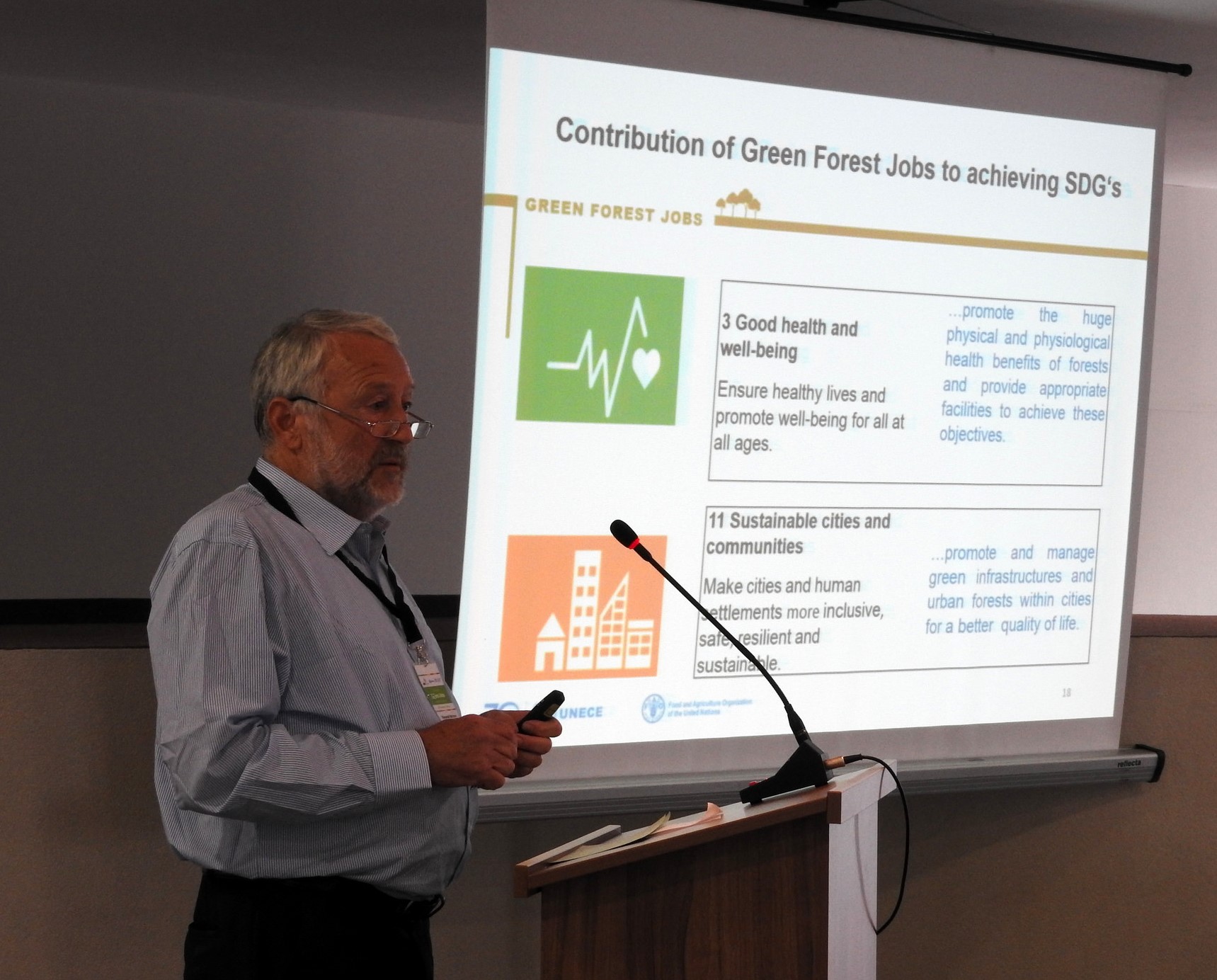
The ability to provide sustainable jobs is critical for the future of the forest sector.
The forest sector is facing changes similar to those of other traditional economic sectors: mechanization and new technology (requiring fewer employees and with different skillsets), globalization, (leading to more competition from low cost regions), rural depopulation, and a changing climate, are all phenomena that influence forest sector employment (Kastenholz, 2015).
The forest sector workforce in Europe shrank from approximately 6.1 million workers in 2000 to 4.7 million workers in 2010 (ECE/FAO 2015). These trends have reduced job stability and incomes in rural, forest-dependent communities, in many cases creating an employment situation, which utilizes informal and seasonal migrant workers and perhaps fosters an environment where the safety, health and well-being of workers has not been given an adequate importance.
On the other hand, sustainable development and the green economy are stimulating new types of job opportunities within the forest sector. While traditional, labour intensive jobs have shrank, there has been growth in many expanding areas of work related to for instance, health, recreation and tourism in the forests. Conversely, while the green economy has the potential to generate new jobs (and a solution to the shrinking and aging pool of traditional forest workers), it is also dependent on the forest sector’s ability to answer the demand for sustainable products and services from the forest. Read more.
In 2017, 45 contestants aged 14 to 22 from 28 countries of the world presented their own research works. The research themes varied from silviculture and SFM to forest flora and fauna, ERS and wood technologies and role of forests in climate and water balance. The works showed great awareness and interest of youth in the vital issues of global forestry.
The International Jury were unanimous in giving the first place to the research made by a school student from South Korea. Her work on the biological control of fungi was ranked best among 35 works. The 2nd place was shared by school students from the USA and Russia for their projects on White-nose syndrome of bats, and the Scots pine pest. The 3rd place was taken by a representative of China for the research of lignin based fibers and by students from Kirghizia for the project on orchands on low-productive lands.
All the contestants represent young forestry science of their countries. There were memorabilia and diplomas for everyone. Aside from the contest, students and guests participated in excursions. Challenging work and rich entertainment programme helped young people to become good friends.
Organisers thank all participants of XIV Junior Forest Contest and wish to welcome young international forestry experts in Russia at next Contest, in autumn 2018! For more details, please, contact the Organising Committee at [email protected].

Are you organizing an event for the European Forest Week (9-13 October)? Let us know at [email protected] and we will post on our website!
Under the theme: Forests, our common good, European Forest Week 2017 will highlight the contribution that European forests make to people’s lives. The city of Warsaw will host the 2017 European Forest Week, which will be held in conjunction with Las2017 (‘las’ means ‘forest’ in Polish), the Joint Session of the UNECE Committee of Forests and the Forest Industry (COFFI), and the FAO European Forestry Commission (EFC) 9 to 13 October 2017.
National and local activities held simultaneously in participating countries will raise awareness on forests, our common good, through contests, exhibitions, talks and videos.
[Website] [#EuropeanForestWeek][Video]
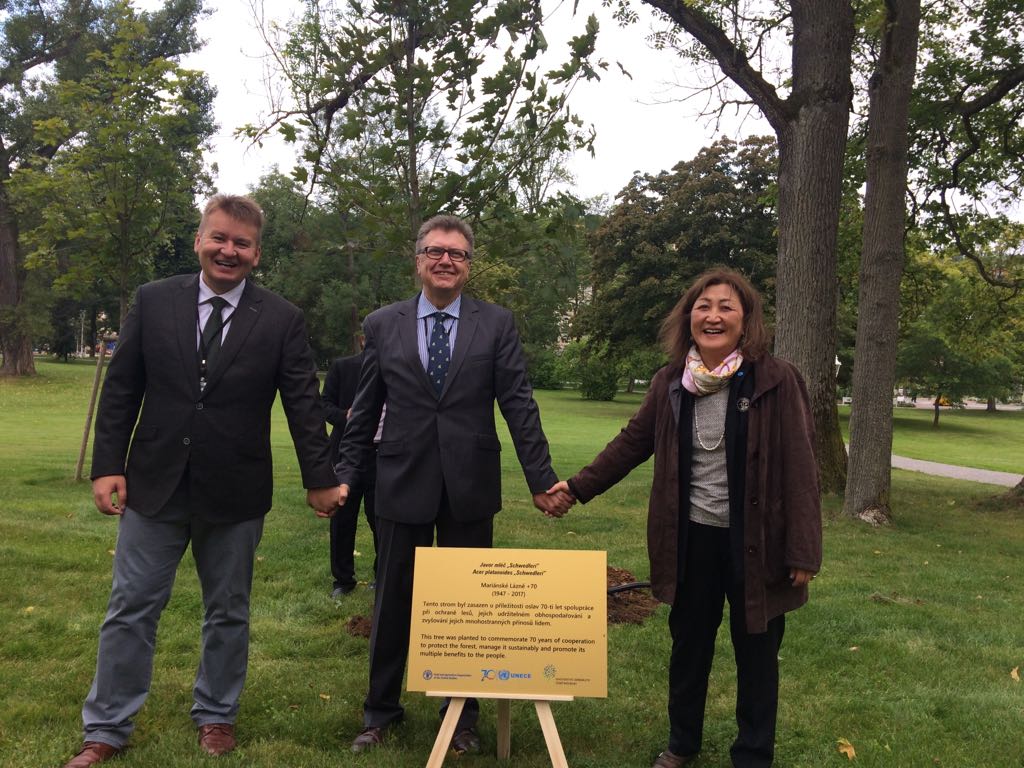 From 5 to 7 September 2017, more than 70 participants from 25 different countries and organizations of the UNECE region met in Mariánské Lázně, Czech Republic, to celebrate 70 years of cooperation between UNECE and FAO to manage forests sustainably while meeting the demand for forest goods and services. The joint work of UNECE and FAO on forests, emerged from the International Timber Conference held in Mariánské Lázně in 1947. New intergovernmental bodies were created to improve cooperation and promote mobilization of wood on a sustainable basis after the wartime levels of harvest: the UNECE Timber Committee, later renamed the Committee on Forests and the Forest Industry (COFFI), and the FAO European Forestry Commission (EFC).
From 5 to 7 September 2017, more than 70 participants from 25 different countries and organizations of the UNECE region met in Mariánské Lázně, Czech Republic, to celebrate 70 years of cooperation between UNECE and FAO to manage forests sustainably while meeting the demand for forest goods and services. The joint work of UNECE and FAO on forests, emerged from the International Timber Conference held in Mariánské Lázně in 1947. New intergovernmental bodies were created to improve cooperation and promote mobilization of wood on a sustainable basis after the wartime levels of harvest: the UNECE Timber Committee, later renamed the Committee on Forests and the Forest Industry (COFFI), and the FAO European Forestry Commission (EFC).The 70th anniversary, generously hosted by the Czech Republic, served as a reminder of the commitment of the member States to regional cooperation, under the umbrella of the United Nations, to meet the multiple challenges for forests and the forest sector.
A round table discussion on forest certification took place within this framework, highlighting essential aspects of forest certification schemes. Similarly to the exchange of views in Mariánské Lázně on forest certification, the two bodies continue to provide a platform for collaboration and discussion on a number of emerging issues in the forest sector. As a result of the meeting, the participants endorsed an Anniversary Message, which will be presented at Las2017 (www.unece.org/forests/las2017), the Joint Session of COFFI and EFC, taking place in Warsaw from 9 to 13 October 2017.
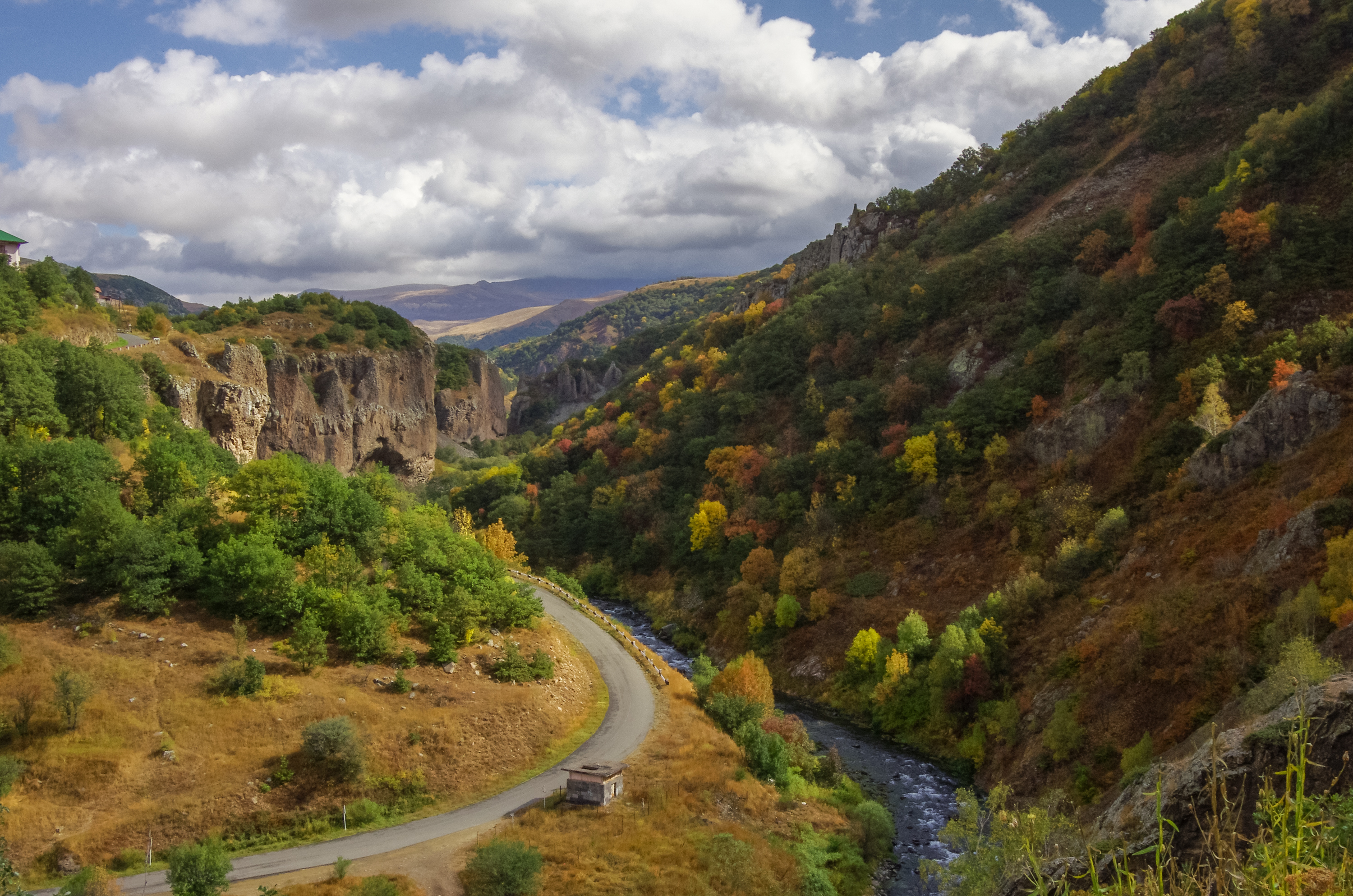
Armenian forests are among the most threatened ecosystems, with degradation accelerating, largely attributable to deforestation and overexploitation. Thus, “expansion of forests is one of the main goals for Armenia, not only for the forests’ protective role, but also to develop forest-related businesses and to ensure fuelwood supply to the population”, said Ekrem Yazici, Deputy Chief of the Joint UNECE/FAO Forestry and Timber Section.
Organized by UNECE and the UN Food and Agriculture Organization (FAO), a national workshop, on 13-15 September 2017, focused on establishing criteria and indicators for sustainable management for Armenia’s forests. Around 30 national experts on forests and related topics – from government, academia and nongovernmental organizations – attended the workshop.
[Meeting Website] [Project Website] [FAO release] [ECE release]
The exhibit was developed on the occasion of the 4th European Forest Week (EFW), which will be celebrated from 9 to 13 October 2017 all over Europe. If you, your organization or government, wish to organize an event during the EFW, kindly check the EWF website at: http://www.fao.org/about/meetings/european-forest-week/en/
 The European organisations representing the forestry and agriculture sectors as well as woodworking and paper industries see the reaction of the European Parliament within the Land Use, Land Use Change and Forestry (LULUCF) regulation as a positive step. The Parliament voted today in favour of more dynamic forest reference levels to account for emissions and removals from sustainably managed forests.
The European organisations representing the forestry and agriculture sectors as well as woodworking and paper industries see the reaction of the European Parliament within the Land Use, Land Use Change and Forestry (LULUCF) regulation as a positive step. The Parliament voted today in favour of more dynamic forest reference levels to account for emissions and removals from sustainably managed forests.EUSTAFOR, CEPF, Copa and Cogeca, CEPI and CEI-Bois recognise that the Parliament calls for flexible and forward-looking rules when establishing forest reference levels. However, further work is needed to ensure that the full potential of sustainably managed forests and wood-based products in mitigating climate change is fully accounted for as the final formulation of the regulation will be agreed in trilogues
It is crucial for the European Union to keep promoting the use of domestic forest resources and the development of the entire forest-based value chain.
“The voting result encourages Member States to continue using their growing forest resources sustainably in order to decarbonise the European economy. However, there still remains quite some room to further improve the LULUCF regulation,” says Piotr Borkowski, Executive Director of EUSTAFOR. “Actively and sustainably managed European forests are essential to allow the European Union to play a leading role in combining environmental integrity with societal needs and economic development.” Read more.
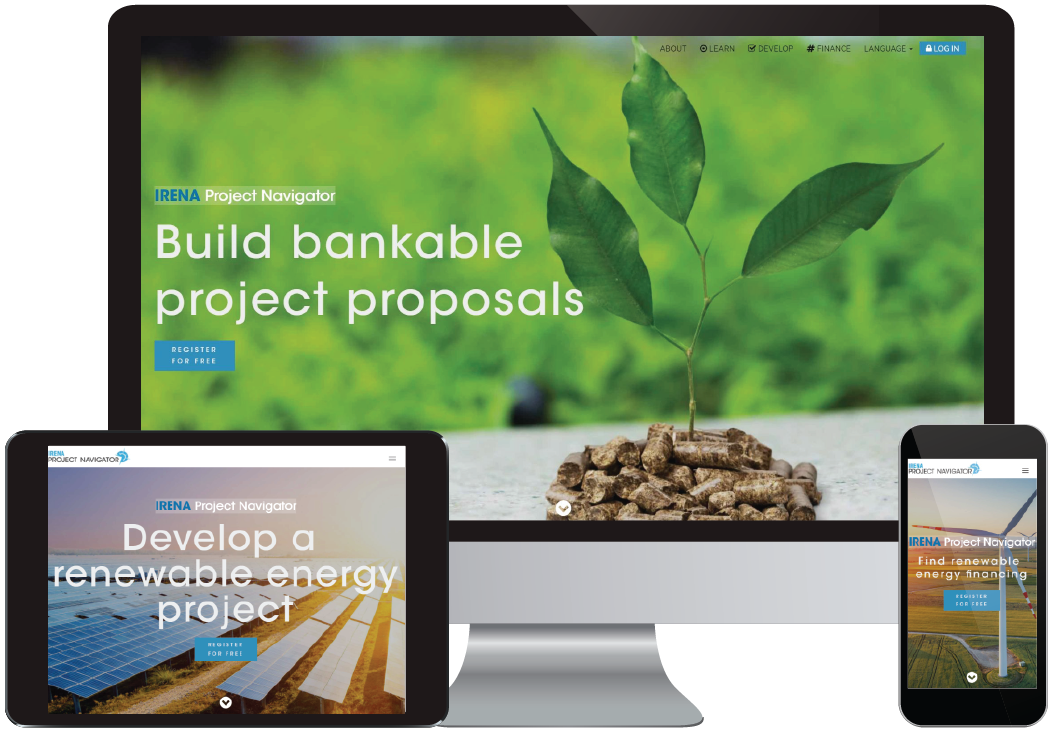 The International Renewable Energy Agency (IRENA) estimates that to meet international climate change targets, the share of renewable energy in the energy mix will need to double by 2030, and that bioenergy can account for around half of the renewable energy share. In this context, solid biofuels from woody biomass are especially cost-effective feedstocks for generating heat and power.
The International Renewable Energy Agency (IRENA) estimates that to meet international climate change targets, the share of renewable energy in the energy mix will need to double by 2030, and that bioenergy can account for around half of the renewable energy share. In this context, solid biofuels from woody biomass are especially cost-effective feedstocks for generating heat and power.IRENA has developed the Project Navigator – an online platform providing comprehensive, easily accessible, and practical information, tools and guidance to assist in the development of bankable renewable energy projects.
The IRENA Project Navigator has recently released guidelines that support the production of solid biofuels from woody biomass feedstock. The guidelines cover the complete lifecycle of a biomass project, ranging from early development (identification, assessment, etc..) up to construction and operations requirements.
A strong emphasis is placed upon detailing project requirements preceding the final investment decision. By outlining control questions and key deliverables, it provides the necessary criteria for identifying suitable project sites, technologies, configurations and business models.
Earlier this year, experts discussed the momentum of biomass-to-energy projects from woody feedstock during a IRENA Project Navigator webinar: One of the conclusions of the event was that managing project risks is crucial as both feedstock and targeted market may evolve during the lifetime of the project.
Find out more about the Project Navigator Guidelines on Woody Biomass by registering to the IRENA Project Navigator platform: http://www.irena.org/navigator. You can also contact the Project Navigator team at [email protected]
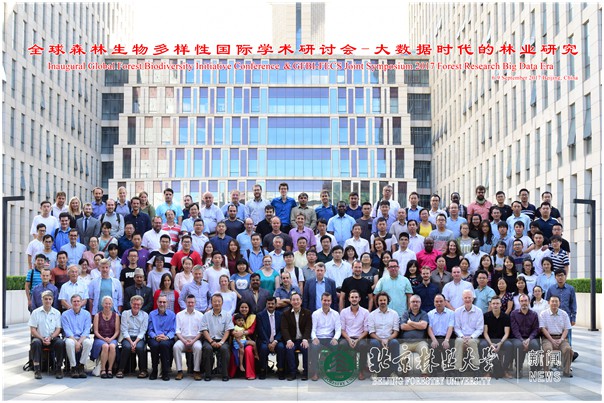 On 6 and 7 September, the Global Forest Biodiversity Initiative (GFBI) held its official launch in Beijing. The GFBI partnership consists of 143 organizations that have committed to gathering detailed groundtruth forest data. Meanwhile, more than 1.3 million points in the world have already been gathered in 1 database of the GFBI.
On 6 and 7 September, the Global Forest Biodiversity Initiative (GFBI) held its official launch in Beijing. The GFBI partnership consists of 143 organizations that have committed to gathering detailed groundtruth forest data. Meanwhile, more than 1.3 million points in the world have already been gathered in 1 database of the GFBI.This initiative started spontaneously when Tom Crowther was asked for the "Billion Tree Campaign": "How many trees are there in the world?" For that work, he collected the first set of data, resulting in the Three Trillion Trees publication , who also received much attention in the Netherlands in the media. doi: 10.1038 / nature14967
Gert-Jan Nabuurs: "For that first job, we were asked for our European data sets which we had gathered already long before. Later this resulted in a follow-up initiative by Jingjing Liang and thus the GFBI was born”.
Jingjing Liang : "The nice thing is that this is a very bottom-up initiative that is independent and focused primarily on science." The problem with other compilations of forests around the world is that those are done by countries reporting to e.g. ForestEurope or the FAO. As a result, these reports are large-scale (one number per country) and often of varying quality between countries.
Tom Crowther: GFBI - due to the high degree of detail of actual measurements in the forest- offers a lot of potential. It's unique. These data will be valuable for e.g. studies on biodiversity, as well as estimates of biomass and CO2 capture under the Paris Agreement. Also for forestry and sustainable forest management, the GFBI can be of great importance. In Beijing, the first projects were discussed as well as the governance and management of the databases.
The GFBI is controlled by: Jingjing Liang, University of West Virginia & University Forestry Beijing; Tom Crowther, ETH, Zurich; Gert-Jan Nabuurs, Wageningen University & Research; Peter Reich, University of Minnesota. Read more at: http://www.gfbinitiative.org/
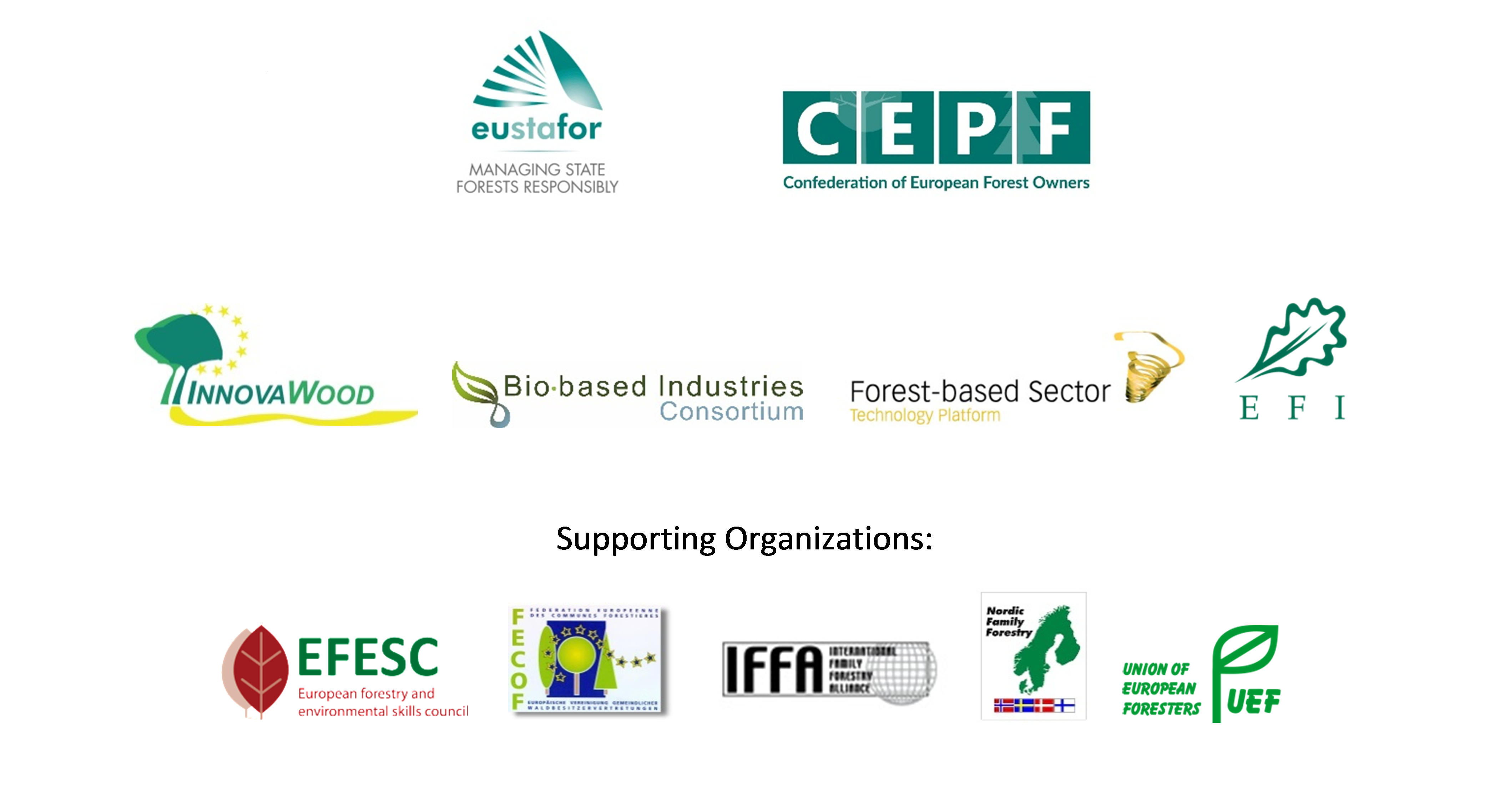 In July 2017, the European Forestry House marked its 10-year anniversary in Brussels. A decade after a branch-cutting inauguration ceremony was held in the presence of Mariann Fischer Boel, European Commissioner for Agriculture and Rural Development, the initial pioneers returned to the European Forestry House to remind those present of the reasons that led to its founding: The need to establish a clear, consolidated voice in Brussels concerning forestry issues at EU level.
In July 2017, the European Forestry House marked its 10-year anniversary in Brussels. A decade after a branch-cutting inauguration ceremony was held in the presence of Mariann Fischer Boel, European Commissioner for Agriculture and Rural Development, the initial pioneers returned to the European Forestry House to remind those present of the reasons that led to its founding: The need to establish a clear, consolidated voice in Brussels concerning forestry issues at EU level.Over the past decade, the European Forestry House has opened its doors to provide a platform for continuous exchanges of relevant know-how and information on forest-related issues. The building now houses 6 organizations and has 6 supporting organizations, who are all related to forests and the forest‑based sector. Together, they have successfully increased the profile and perception of the forest and forest-based sector and have turned the house into an acknowledged center of competence on forestry issues.
The success of the European Forestry House was confirmed by Phil Hogan, the current European Commissioner for Agriculture and Rural Development, who spoke to the gathering through a video speech.
More information available from the European State Forest Association (EUSTAFOR) and the Confederation of European Forest Owners (CEPF) who jointly founded the European Forestry House.
 RED CODE149, the latest collection of the designer María Lafuente was launched in Madrid (Spain) in September. The streets of one of the most popular neighbourhoods of the capital city of Spain, were transformed into a catwalk.
RED CODE149, the latest collection of the designer María Lafuente was launched in Madrid (Spain) in September. The streets of one of the most popular neighbourhoods of the capital city of Spain, were transformed into a catwalk.The collection is inspired by nature, sustainability and Doñana National Park. Some of the clothes are manufactured with cellulose fibers coming from forests managed in a sustainable way and certified by PEFC. The designer introduces the philosophy of protecting and preserving fauna and flora. Sustainable materials, women at risk of social exclusion, rural development, traditions, nature, habitat and ethics are concepts that have been integrated in RED CODE149.
The collection is one of the actions developed within the partnership agreement between PEFC and the "Forest For Fashion" initiative, developed by the Forestry and Wood Section of UNECE / FAO, which aims to promote the use of sustainable materials from well managed forests into the world of fashion. Within the framework of this project, forest and fashion combine forces: the creativity of fashion and design contribute to the value of forests and their resources, and forests help fashion become a more sustainable sector.
PEFC provides the fashion sector with a tool to identify sustainable products from forests. The PEFC label provides consumers with assurances that environmental and social issues have been respected in their production process, including social rights, safety at work, as well as the responsible management of the forests that produce the cellulose fibers. More info HERE
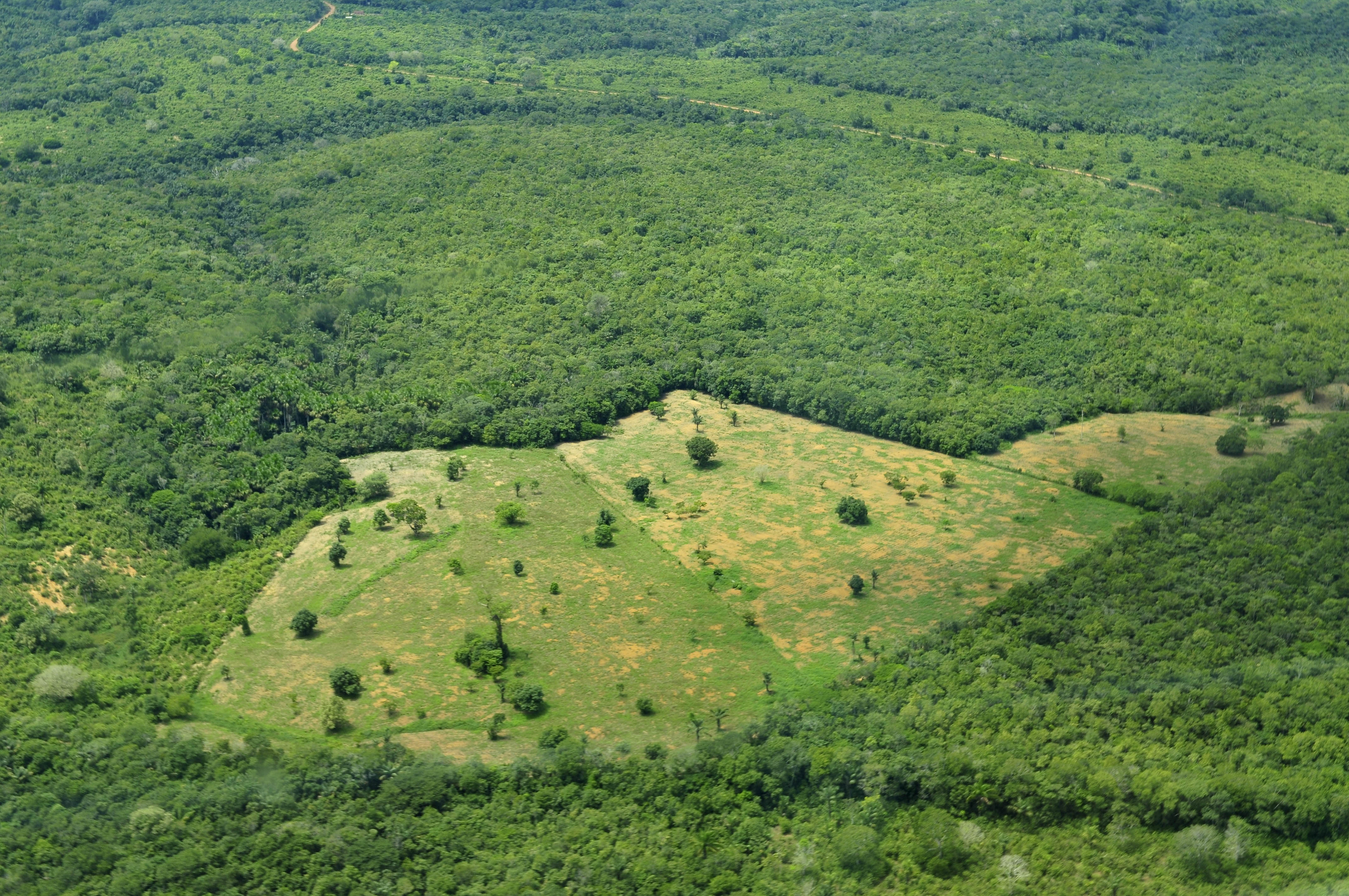 RESTORE+, A new project launched in April this year at the International Institute for Applied Systems Analysis (IIASA), brings together ten international partners to develop policy-oriented solutions for tropical forest restoration in Indonesia, Brazil, and the Congo.
RESTORE+, A new project launched in April this year at the International Institute for Applied Systems Analysis (IIASA), brings together ten international partners to develop policy-oriented solutions for tropical forest restoration in Indonesia, Brazil, and the Congo.In order to limit climate change, protect the environment, and provide food for a growing world population, sustainable land use is critical. In the form of scientific South-South collaboration, RESTORE+ addresses this issue mainly in regions, where land-use change is of critical policy importance.
In Indonesia, the project aims to explore how the country can utilize degraded land to help forest conservation while enhancing land based economic productivity. In Brazil the aim is to assess how the new Forest Code can support the country's deforestation reduction and forest restoration targets under the Bonn Challenge.
“Assessing restoration potential of tropical degraded areas is a major two-fold challenge. Degraded areas have yet to be identified and agreed upon. Moreover, we need more knowledge on the implication of restoring these areas, not just from the environmental perspective but also what it means to the local people, the Food-Land-Energy Nexus, or the broader economy,” says IIASA Ecosystems Services and Management Program Deputy Director Florian Kraxner, who leads the project.
RESTORE+ aims to produce both – data and analysis (including citizen-science based tools) – that policymakers need to design effective (forest) restoration policies. This way, the project contributes to the Bonn Challenge by enhancing land use planning capacity for effective Forest Landscape Restoration (FLR) to achieve multiple goals of environmental and social benefits.
 The International Institute for Applied Systems Analysis (IIASA) is pleased to present a unique global map of certified forest areas. The map which is based on a participatory and collaborative mapping approach, is available freely online and described in a new open-source-publication by Kraxner F, Schepaschenko D, Fuss S, et al. (2017): Mapping certified forests for sustainable management - A global tool for information improvement through participatory and collaborative mapping. Forest Policy and Economics 83: 10-18.
The International Institute for Applied Systems Analysis (IIASA) is pleased to present a unique global map of certified forest areas. The map which is based on a participatory and collaborative mapping approach, is available freely online and described in a new open-source-publication by Kraxner F, Schepaschenko D, Fuss S, et al. (2017): Mapping certified forests for sustainable management - A global tool for information improvement through participatory and collaborative mapping. Forest Policy and Economics 83: 10-18.The new map was developed by researchers at IIASA together with the Mercator Research Institute on Global Commons and Climate Change (MCC) and the Norwegian University of Life Sciences (NMBU). It combines country-level statistics with modern remote sensing products and crowdsourcing and shows certified forest areas at 1 kilometer resolution—far more detailed than currently available maps. This high resolution allows a large range of users including policymakers, non-governmental organizations, researchers, forest organizations, private investors, and the general public to zoom into the area of their interest. This is a significant step forward in consumer transparency and credibility.
To support data validation, the researchers used the interactive online crowdsourcing platform Geo-Wiki as a participatory and collaborative mapping tool where different users can give feedback to improve the map.
“We have to ensure that biomass converted into products such as energy does not harm our climate mitigation efforts or biodiversity. The new map is a long-awaited tool that can serve as a sustainability and environmental safeguard,” says IIASA researcher Dmitry Schepaschenko, who designed the map on Geo-Wiki.
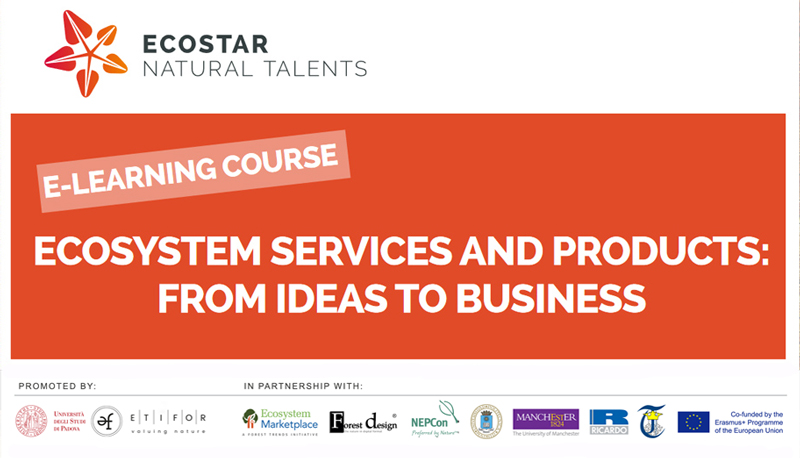 Are you an MSc or PhD student? A consultant or entrepreneur? Then, this is the course for you!
Are you an MSc or PhD student? A consultant or entrepreneur? Then, this is the course for you!Finally it’s here, the international online course that guides you to create innovative business ideas in ecosystem services and products.
The course, developed by the University of Padova, Etifor and other European Universities and international companies, provides continuous interaction with top professors, experts and company directors specialized in the fields of forestry and ecosystem services and products. It will run from October to December 2017, on Moodle’s e-learning platform and it has a total of 150 learning hours including up to 40 hours of e-modules.
The course focuses on the following sectors: natural capital, economic evaluation of ecosystem services, sustainable investments, wild forest products, payment for ecosystem services, forest certification, carbon accounting in the carbon markets and ecotourism! Each sector has been specifically chosen based on its current trend of economic and innovation growth, see our recent publication in the market outlooks for the trends in these sectors. For more information and applications, visit the Ecostarhub.com/e-learning-course pages and fill in the form to become part of our network and learn how make your ideas grow!
Please hurry, applications are limited; application deadline: September, 30th!
There are opportunities for sustainable new products. Sustainable value chain of forest products and high technology in the forest sector have a crucial role in competitive sustainable innovations, marketing and business of forest products. Markets are linked to policy framework. Value added products with certification are in an important role.
Research results, Annika Hyytiä, University of Helsinki, Finland
 Preliminary results of a study titled “Economic Impacts of potential EU forest carbon sink policies on the forest based sector” were presented on September 6th at a workshop in Brussels. The results show that if countries in the European Economic Area (EEA) would limit their future harvests to comply with the EU forest carbon sink policies, the EEA ‘s roundwood harvest could decrease considerably by 2030 compared to the situation without such policies. In particular, the study points out that harvests, forest industry production and thereby also employment opportunities would leak from the EEA to the rest of the world. Jobs would disappear throughout Europe, particularly from the labor-intensive wood products manufacturing and forestry sector. Wood and wood-based product imports to Europe would increase despite growing European forest resources.
Preliminary results of a study titled “Economic Impacts of potential EU forest carbon sink policies on the forest based sector” were presented on September 6th at a workshop in Brussels. The results show that if countries in the European Economic Area (EEA) would limit their future harvests to comply with the EU forest carbon sink policies, the EEA ‘s roundwood harvest could decrease considerably by 2030 compared to the situation without such policies. In particular, the study points out that harvests, forest industry production and thereby also employment opportunities would leak from the EEA to the rest of the world. Jobs would disappear throughout Europe, particularly from the labor-intensive wood products manufacturing and forestry sector. Wood and wood-based product imports to Europe would increase despite growing European forest resources.About 80% of the decrease in wood harvests in the EEA countries would be directly replaced by harvests in the rest of the world, reducing forest carbon sinks outside Europe. Three quarters of the decline in the EEA harvests would shift to South and North America. Harvests in Russia would also increase considerably. Harvests and forest industry production outside Europe would grow in response to growing global demand for wood-based products – regardless of the EU policies. Read full text.
Summary of the preliminary study results and the slide presentation from the workshop are available at: www.tapio.fi/EUcarbon
 Economic development, job creation and retention of young people in rural areas are main objectives of Albania, Kosovo, Macedonia, Serbia, Montenegro and Bosnia Herzegovina. These objectives have to be linked with the six countries’ ambition to join the EU. This requires aligning their national legislations with the EU’s acquis communautaire[1] and its 35 Chapters[2].
Economic development, job creation and retention of young people in rural areas are main objectives of Albania, Kosovo, Macedonia, Serbia, Montenegro and Bosnia Herzegovina. These objectives have to be linked with the six countries’ ambition to join the EU. This requires aligning their national legislations with the EU’s acquis communautaire[1] and its 35 Chapters[2].CNVP is focused on implementing agri-rural, forestry and renewable energy projects that are in line with EU requirements that will reduce environmental risks and ecological scarcities, as well as achieve sustainable development without degrading the environment i.e. the Green Economy. CNVP is also focused on addressing other issues of importance to the EU (and the Balkans): unsafe water provision, sanitation and drainage; inadequate solid and hazardous waste management; and air pollution, including uncontrolled emissions from motor vehicles, factories and low grade domestic fuels i.e. the Brown Agenda.
Support for EU membership requires a long-term, holistic approach; there is no silver bullet, no quick fix. Approximation of the acquis in agriculture, rural development, food safety, veterinary, phytosanitary and environmental policy has to be prepared systematically. This requires transposing EU legislation, and ensuring that each candidate country has the capacity (and willingness) to enforce it. Further state, private sector and donor finance will be necessary if the Balkan countries are to join the EU and achieve their economic, employment and youth retention objectives. Read more…
[1] The accumulated body of EU law and obligations involving all the EU's treaties and laws (directives, regulations, decisions), declarations and resolutions, international agreements and judgments of the Court of Justice
[2] https://ec.europa.eu/neighbourhood-enlargement/policy/conditions-membership/chapters-of-the-acquis_en
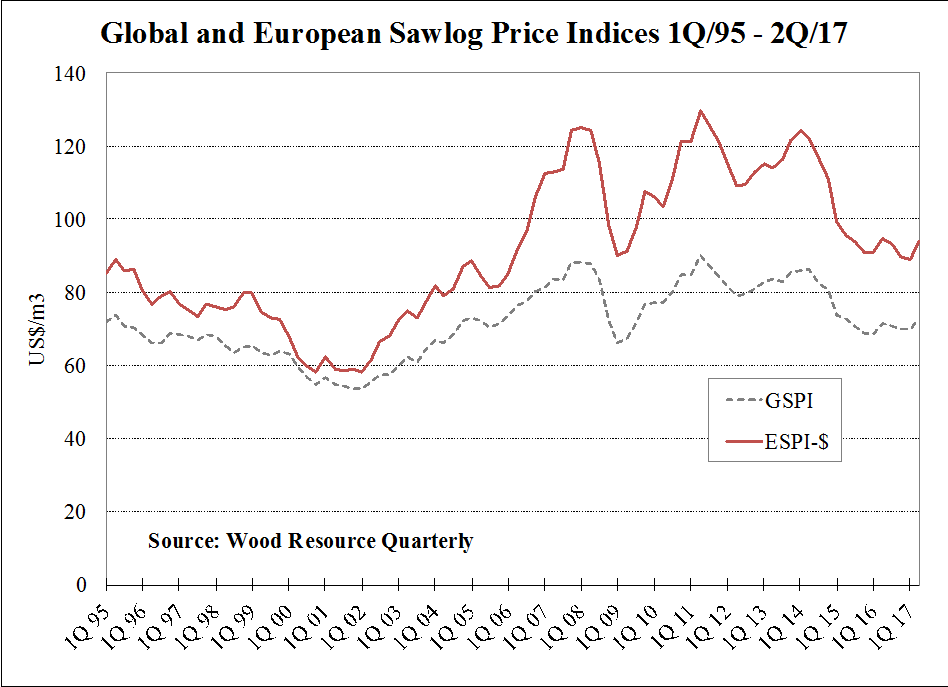 Sawlog prices were up quarter-over-quarter in practically all regions of the world in the 2Q/17. The biggest increases were seen in Central and Eastern Europe while there were modest price declines in the US South, Coastal British Columbia, Quebec and Brazil, according to the Wood Resource Quarterly.
Sawlog prices were up quarter-over-quarter in practically all regions of the world in the 2Q/17. The biggest increases were seen in Central and Eastern Europe while there were modest price declines in the US South, Coastal British Columbia, Quebec and Brazil, according to the Wood Resource Quarterly.Wood raw-material costs for European lumber producers (which typically are in the range of 60-70% of the total production cost) have declined faster than in most other world regions in the past few years, and sawmills on the continent have become more competitive.
Although European sawmills continue to have some of the world’s highest raw-material costs, the discrepancy between the Global Sawlog Price Index (GSPI) and the European Sawlog Price Index (in US dollar terms) has fallen, bottoming out in the first quarter of 2017 to reach its lowest level in more than ten years. In the 2Q/17, the difference between the two indices widened again with the ESPI jumping 5.7% quarter-over-quarter, partly because of the weakening US dollar, while the GSPI was up only 3.5%.
Sawlog prices in Sweden, Finland and Norway are currently at their lowest levels in over ten years in their local currencies despite healthy lumber markets for sawmills in the region and high production levels. In Germany and Austria there has been a slight increase in sawlog prices during 2016 and early 2017, but prices are still close to their lowest they have been since 2010.
Publications
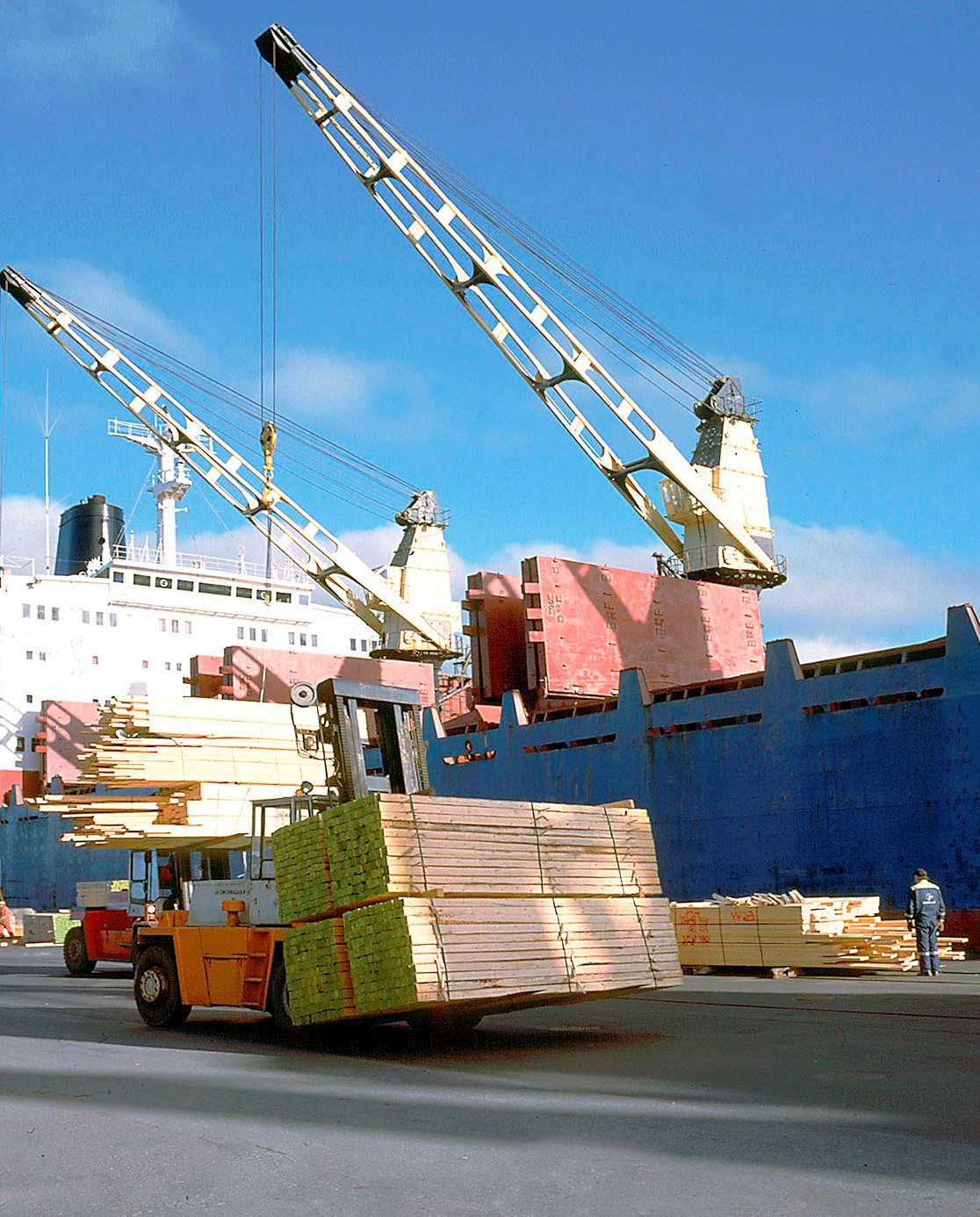 Are you curious how great the forecast for the sector will develop in 2018?
Are you curious how great the forecast for the sector will develop in 2018?Mark your calendar for the official release of the Forest Products Annual Market Review 2016-2017! The Joint UNECE/FAO Forestry and Timber Section will officially release the Review on 10 October 2017. The release coincides with the Market Discussion of Las2017, the joint session of the ECE Committee on Forests and the Forest Industry and the FAO European Forestry Commission.
The Review provides a comprehensive analysis of markets in the UNECE region and reports on the main market influences outside the UNECE region. It covers the range of products from-forest to end-user: from roundwood and primary processed products to value-added and housing. Statistics-based chapters analyse the markets for wood raw materials, sawn softwood, sawn hardwood, wood-based panels, paper, paperboard and woodpulp. Other chapters analyse policies, forest products trade barriers affecting the UNECE region, and markets for wood energy. Underlying the analysis is a comprehensive collection of data. The Review highlights the role of sustainable forest products in international markets. Policies concerning forests and forest products are discussed, as well as the main drivers and trends. The Review also analyses the effects of the current economic situation on forest product markets.
The Joint UNECE/FAO Forestry and Timber Section is pleased to inform you that the following information and data is now available:
- Analytical tables for the FPAMR 2017;
- Price Statistics through May 2017;
- Trade Flow showing trade by value for 9 forest products between leading countries of the region and outside the region.
Preliminary data for 2016 available at FAOSTAT.
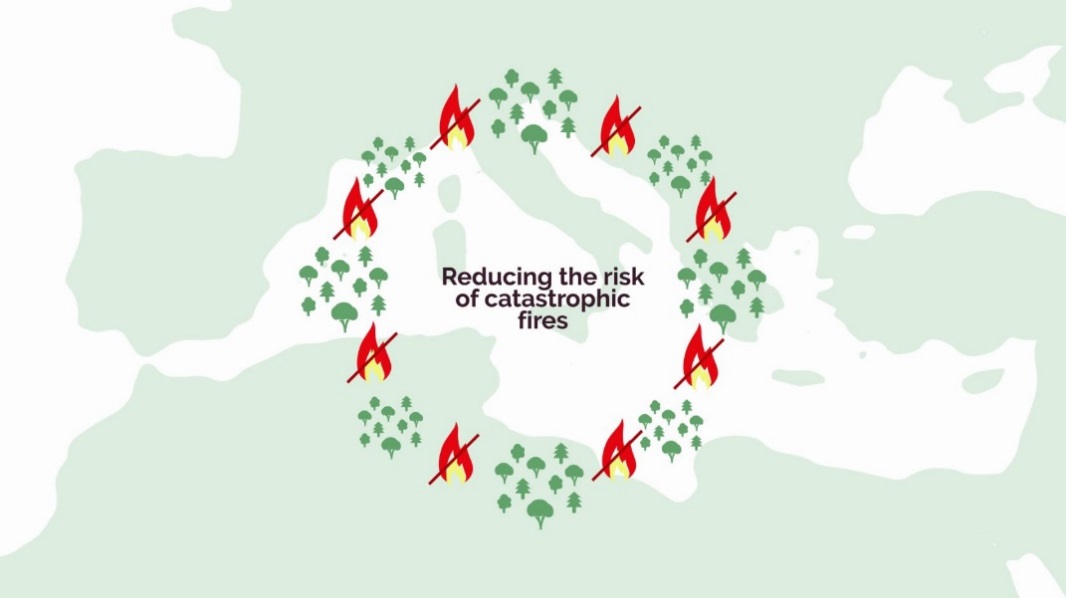 Each summer we hear terrible news about forest fires from world fire prone areas, a trend that has continued this year with the tragic news from Portugal, France and the USA, among others. Unfortunately, more are expected to come. It is clear that the urgency lies with combating the fires and providing help to local communities, but once the crisis is past, policy makers need to put forward science-informed policies to address the root causes of forest fires.
Each summer we hear terrible news about forest fires from world fire prone areas, a trend that has continued this year with the tragic news from Portugal, France and the USA, among others. Unfortunately, more are expected to come. It is clear that the urgency lies with combating the fires and providing help to local communities, but once the crisis is past, policy makers need to put forward science-informed policies to address the root causes of forest fires.In a new video, the European Forest Institute (EFI) looks at the key factors of increased forest fire risk in the Mediterranean region and advocates for a new vision based on shifting the focus from reactive fire suppression to long-term proactive fire prevention and forest management at the landscape scale.
The risk of forest fires in the Mediterranean region is outpacing fire suppression capabilities, despite the billions of euros invested. Four key factors explain this:
· the expansion of forests as a result of rural abandonment;
· the increase in fuel loads due to lack of forest management;
· the high number of fire ignitions due to socio-economic and land-use related factors;
· climate change and increasing weather risk conditions.
In the past, the focus has been on fire suppression rather than on long-term strategies for fire prevention. Now, we need a new vision where the focus is shifted from fire suppression to fire prevention and forest management: managing our forests to be more resilient to climate change and addressing the socio-economic and land-use conflicts responsible for the high number of fire ignitions.
The video is available in English, with subtitles in Spanish, French and Italian, with Portuguese coming soon. For more information and links: http://www.efimed.efi.int/portal/news/?bid=2863
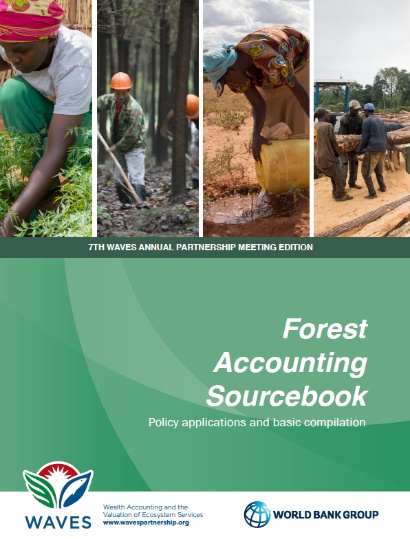 The Wealth Accounting and the Valuation of Ecosystem Services Global Partnership (WAVES) recently released the “Forest Accounting Sourcebook: Policy Applications and Basic Compilation”. The publication was first presented during the 7th Annual Partnership Meeting that was held in Kigali, Rwanda. The Sourcebook brings together different materials and describes the potential of forest accounting to play a role in policy planning and review. It outlines relevant policy issues and how discussion of these issues can be supported using information from the accounts, as well as illustrating analytical extensions.
The Wealth Accounting and the Valuation of Ecosystem Services Global Partnership (WAVES) recently released the “Forest Accounting Sourcebook: Policy Applications and Basic Compilation”. The publication was first presented during the 7th Annual Partnership Meeting that was held in Kigali, Rwanda. The Sourcebook brings together different materials and describes the potential of forest accounting to play a role in policy planning and review. It outlines relevant policy issues and how discussion of these issues can be supported using information from the accounts, as well as illustrating analytical extensions. WAVES is a World Bank-led global partnership that aims to promote sustainable development by ensuring that physical and monetary values of natural capital are mainstreamed in development planning and decision making. This global partnership brings together a broad coalition of UN agencies, governments, international institutes, nongovernmental organizations and academics to implement Natural Capital Accounting (NCA) where there are internationally agreed standards, and develop approaches for other ecosystem service accounts.
These impressive figures come from Probos’s most recent sustainably sourced timber market study, its fifth in ten years. Probos is an independent non-profit knowledge and innovation institute and serves as liaison between government, forest owners, trade and industry and NGOs. Over its 50 years, Probos has built up extensive experience in timber market study and data collection.
Since 2006 Probos has measured the market share of sustainably sourced timber in the Netherlands five times and Belgium, with Belgian partners, now coming up for the third time. Probos believes that for measures and initiatives to promote sustainably sourced timber to be effective, it is crucial to know which markets to target and that, in turn, can be achieved through comprehensive market intelligence and market share monitoring.
The article which describes the outcome of our latest study can be found here. The full report can be downloaded via www.probos.nl (Dutch only).
 The newest contribution of the Slovenian Forestry Institute (http://en.gozdis.si/) and the LIFEGENMON project (http://www.lifegenmon.si/) in the field of forest pedagogics, inspiring all who whish to teach and learn in nature.
The newest contribution of the Slovenian Forestry Institute (http://en.gozdis.si/) and the LIFEGENMON project (http://www.lifegenmon.si/) in the field of forest pedagogics, inspiring all who whish to teach and learn in nature.The Handbook For Learning and Play in the Forest presents over 30 entertaining and educative activities for outdoor learning about trees, forest animals, water and genetic diversity. All activities have been developed and tested in practice in the Forest of Experiments (http://sl.gozdis.si/gozd-eksperimentov/), an innovative environmental education centre of the Slovenian Forestry Institute, using Flow Learning (http://www.sharingnature.com/flow-learning.html).
We hope this handbook will bring youngsters and their teachers outdoors out of the formal classrooms to the best teacher ever – Nature. https://doi.org/10.20315/SilvaSlovenica.0008
· Rising demand for forest products increased removals from timberlands. Annual timber removals nearly doubled by 1996, and were 57 percent higher in 2015 than they were in 1953.
· The forest products industry and landowners responded by increasing the productivity of their forests. Forest products companies invested heavily in research to promote productivity and improve forest management practices. The result was a 112 percent increase in total annual timberland growth between 1953 and 2015.
· Increased demand has not depleted forests. The number of timberland acres has remained stable, increasing by about 3 percent. Statistical analyses show that increased demand is associated with more acres, better growth and larger inventories.
· Urbanization, not increased demand for forest products, is the biggest threat to forests in the United States. Between 1982 and 2012, development was responsible for almost half (49.2 percent or 17.7 million acres) of all forestland that converted to other uses in the United States.
The report is available on Forest2Market’s website: At a Glance, Executive Summary and full report.
Events
 The LIFE+ implementation project on development of a system for forest genetic monitoring “LIFEGENMON” (http://www.lifegenmon.si/) will be presented at the IUFRO 125th Anniversary Congress (http://iufro2017.com/ ) in Session 45 “Forest policy and biodiversity strategy: The relevance of forest genetic resources” (http://www.lifegenmon.si/the-lifegenmon-session-programme/).
The LIFE+ implementation project on development of a system for forest genetic monitoring “LIFEGENMON” (http://www.lifegenmon.si/) will be presented at the IUFRO 125th Anniversary Congress (http://iufro2017.com/ ) in Session 45 “Forest policy and biodiversity strategy: The relevance of forest genetic resources” (http://www.lifegenmon.si/the-lifegenmon-session-programme/).The eminent Keynote speakers will open the Session with interesting lectures on Pan-European efforts in biodiversity conservation, the importance of genetic diversity for sustainable forestry, selection of best management practices for conservation of spatial genetic structure diversity and dynamics in beech forests, the challenges of Serbian spruce in its natural habitat and the basic principles of FGM, an overview of concepts and definitions of forest genetic monitoring and an overview on forest policies in countries of South Eastern Europe regarding conservation and management of forest genetic resources. The Session will be wrapped up by concluding Keynote presentation of the future of forest genetic monitoring, aiming at initializing a vivid discussion. More information available at http://iufro2017.com/.
 EFI 2017 Annual Conference will take place in Oslo, Norway on 4-6 October 2017. The event will be organised in cooperation with the Norwegian University of Life Sciences (NMBU) and The Norwegian Institute for Bioeconomic Research (NIBIO).
EFI 2017 Annual Conference will take place in Oslo, Norway on 4-6 October 2017. The event will be organised in cooperation with the Norwegian University of Life Sciences (NMBU) and The Norwegian Institute for Bioeconomic Research (NIBIO).The first day of the Annual Conference will be built around the new EFI strategy - how to implement the strategy to benefit the whole network? Scientific seminar Emerging forest-based solutions and their implications for forest management will be held on 5 October. This open seminar looks into the biobased future with a special focus on innovative bio-based technologies and opportunities and challenges for forest management in the 21st century. Check out the latest updates on the seminar and register here: http://www.efi.int/portal/members/annual_conferences/2017/
 Las2017 - the joint 75th session of the ECE Committee on Forests and the Forest Industry (COFFI) and the 39th session of the FAO European Forestry Commission (EFC) will be held 9 - 13 October 2017 in Warsaw, Poland, together with the 4th European Forest Week.
Las2017 - the joint 75th session of the ECE Committee on Forests and the Forest Industry (COFFI) and the 39th session of the FAO European Forestry Commission (EFC) will be held 9 - 13 October 2017 in Warsaw, Poland, together with the 4th European Forest Week.The theme of Las2017 is ‘Forests, our common good: Enhancing sustainable development in light of the Paris Agreement’. The session will specifically focus on forest and forest products in a changing climate.
The draft programme for the event, the annotated agenda, all relevant documents for the meeting and information on practical matters regarding the meeting will be available at: http://www.unece.org/forests/las2017.
 Regional, national and European stakeholders interested in wood mobilisation are invited to the conference ‘Solutions for Wood Mobilisation in Europe’. The programme is designed to address both forest practitioners (forest managers, entrepreneurs, wood suppliers etc.) and policy-makers.
Regional, national and European stakeholders interested in wood mobilisation are invited to the conference ‘Solutions for Wood Mobilisation in Europe’. The programme is designed to address both forest practitioners (forest managers, entrepreneurs, wood suppliers etc.) and policy-makers.From October 12 to 13, 2017, the members of the EU research project SIMWOOD will present their findings of four years of region-based research action and trans-European cooperation at a final conference in Paris, France. The SIMWOOD project aims to increase the mobilisation of wood from forests and woodlands in Europe. The project reaches out to stakeholders and regional initiatives with the aim of engaging and mobilising forest owners and practitioners, promoting collaborative forest management and ensuring sustainable forest functions. Project website: http://www.simwood-project.eu/
 “Wood – Science – Economy”, 16-17 October 2017, Poznan, Poland , is the second international scientific conference organized by the Wood Technology Institute and the State Forests.
“Wood – Science – Economy”, 16-17 October 2017, Poznan, Poland , is the second international scientific conference organized by the Wood Technology Institute and the State Forests.Both in Poland and abroad scientific conferences have so far been organized separately by the scientists in the field of forestry and those in the field of wood industry. However, the issues regarding forestry and wood management are so complex that they require multidisciplinary approach and new, innovative technological and organizational solutions. In the modern world fast exchange of the latest knowledge from the perspective of the entire wood chain is necessary.
The aim of the conference is to internationally exchange knowledge about the latest research findings in forestry and wood science and in the related fields, as well as about the achievements and possibilities of their practical use in the forestry and wood sector and the economy. This will allow not only identification of investigation trends with the greatest potential for implementation, but also elevation of research carried out in this field to a higher level.
The conference is addressed to the representatives of science and economic practice in the field of forestry, wood industry, and neighbouring fields. More information: http://wood-science-economy.pl/
 International Conference on Forest Conservation using Forest Early Warning System is being held in Tokyo, Japan, October 24-25, 2017, organized by Japan International Cooperation Agency (JICA) and Japan Aerospace Exploration Agency (JAXA) in cooperation with the Forestry Agency of Japan. JICA and JAXA launched the Forest Governance Initiative at the UNFCCC COP21 in Paris, which led to the development of a new system called “JICA-JAXA Forest Early Warning System in the Tropics” (JJ-FAST) to track deforestation with JAXA’s Advanced Land Observing Satellite-2 (ALOS-2). ALOS-2 can monitor forest cover changes in the tropics effectively with its capacity to obtain imagery data even under cloud-covered conditions and those findings will be updated about every six weeks on the JJ-FAST website (http://www.eorc.jaxa.jp/jjfast/) with resolution of up to 50 meters. The two-day conference provides opportunities for participants to exchange views on how developing countries can improve forest conservation measures by means of satellite technologies and how their development partners can support them. Additional information will be made available in due course.
International Conference on Forest Conservation using Forest Early Warning System is being held in Tokyo, Japan, October 24-25, 2017, organized by Japan International Cooperation Agency (JICA) and Japan Aerospace Exploration Agency (JAXA) in cooperation with the Forestry Agency of Japan. JICA and JAXA launched the Forest Governance Initiative at the UNFCCC COP21 in Paris, which led to the development of a new system called “JICA-JAXA Forest Early Warning System in the Tropics” (JJ-FAST) to track deforestation with JAXA’s Advanced Land Observing Satellite-2 (ALOS-2). ALOS-2 can monitor forest cover changes in the tropics effectively with its capacity to obtain imagery data even under cloud-covered conditions and those findings will be updated about every six weeks on the JJ-FAST website (http://www.eorc.jaxa.jp/jjfast/) with resolution of up to 50 meters. The two-day conference provides opportunities for participants to exchange views on how developing countries can improve forest conservation measures by means of satellite technologies and how their development partners can support them. Additional information will be made available in due course. Why do we need a European circular economy strategy? What should its main ingredients be? What is the outlook for a sustainable European forest bioeconomy? What bioeconomy gaps do we still need to fill?
Why do we need a European circular economy strategy? What should its main ingredients be? What is the outlook for a sustainable European forest bioeconomy? What bioeconomy gaps do we still need to fill?These are the questions to be discussed in the seminar held under the ThinkForest, a high-level science-policy discussion and information-sharing forum on the future of European forest-based sector on 7 November 2017 in Brussels.
More information will be available http://www.efi.int/portal/policy_advice/thinkforest/upcoming_events/
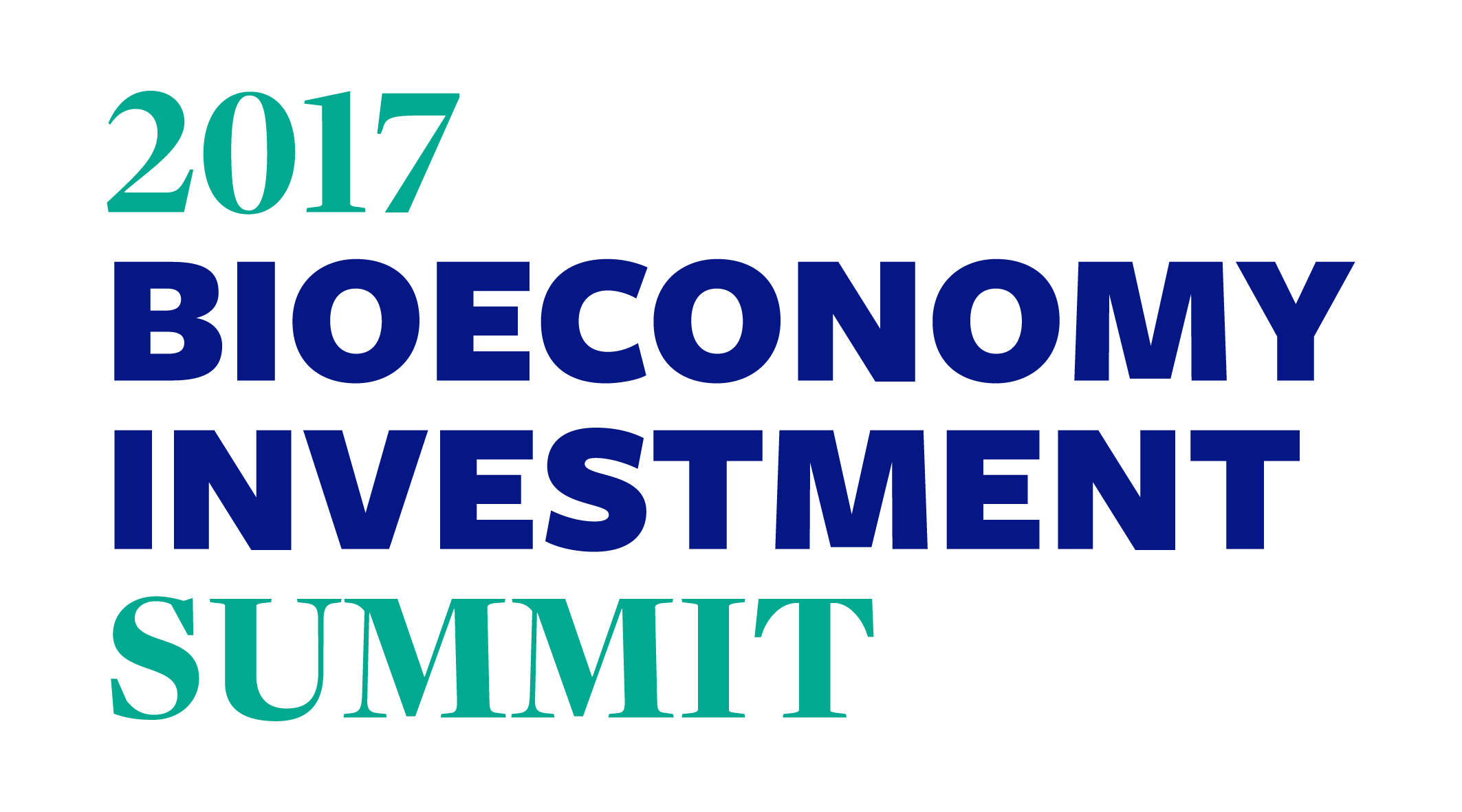 Join us on 14-15 December 2017 in Helsinki, Finland for the 2017 Bioeconomy Investment Summit.
Join us on 14-15 December 2017 in Helsinki, Finland for the 2017 Bioeconomy Investment Summit.Over 30 speakers from across the globe will share their views on how we can bring together the economy and the environment.
New advances in technology mean that everything that can be made out of oil can be made from renewable, biological resources. There are huge environmental and business opportunities for a wide range of industries: construction, chemicals, textiles, energy, plastics.
The bioeconomy gives us a unique opportunity for building a sustainable future. Our speakers will focus on what investment steps we need to take to make it happen.
Register here: https://www.eventbrite.co.uk/e/2017-bioeconomy-investment-summit-tickets-36478336687 More info: http://www.2017bioecosummit.eu/
How to contribute? Deadline to provide contributions to the next issue is 15 December2017. Please note that the content of the billboard does not necessarily reflect the views of the United Nations. Contributions are published as received and editing is the responsibility of the contributor. More information and the previous issues are available
here.
We work in Collaboration with the Global Forest Information Service.